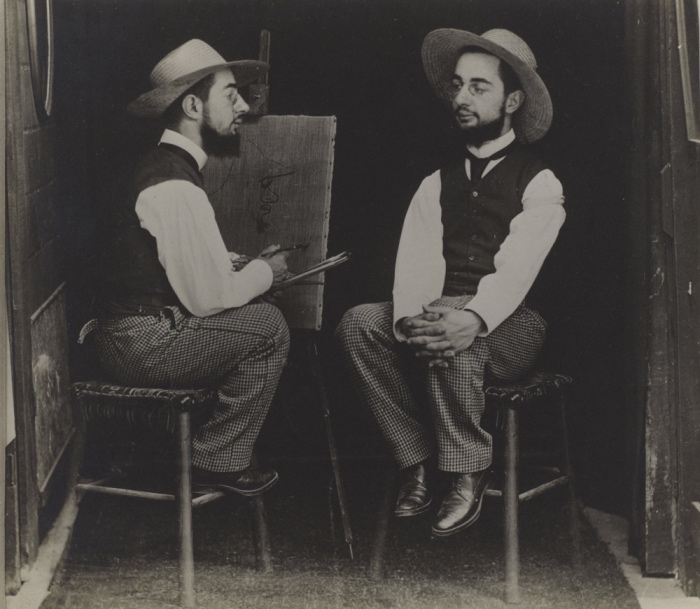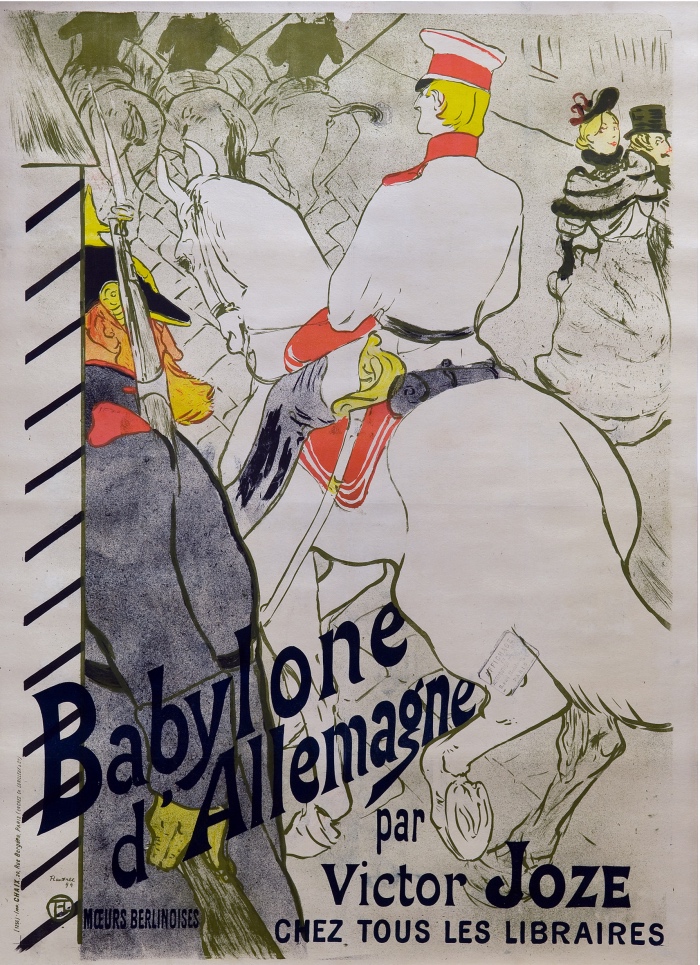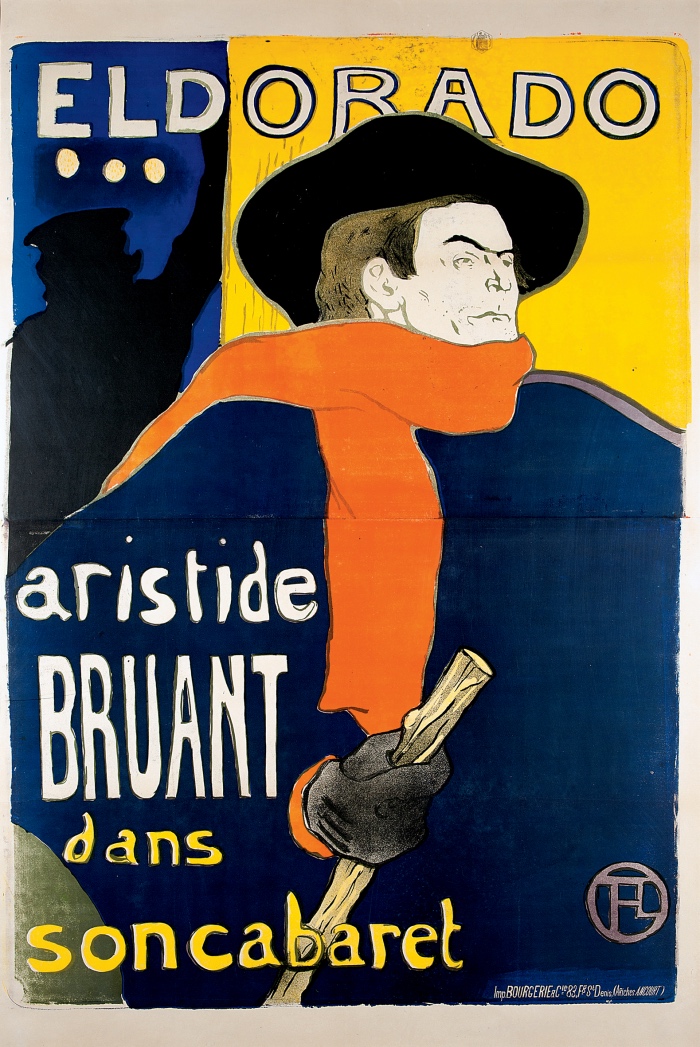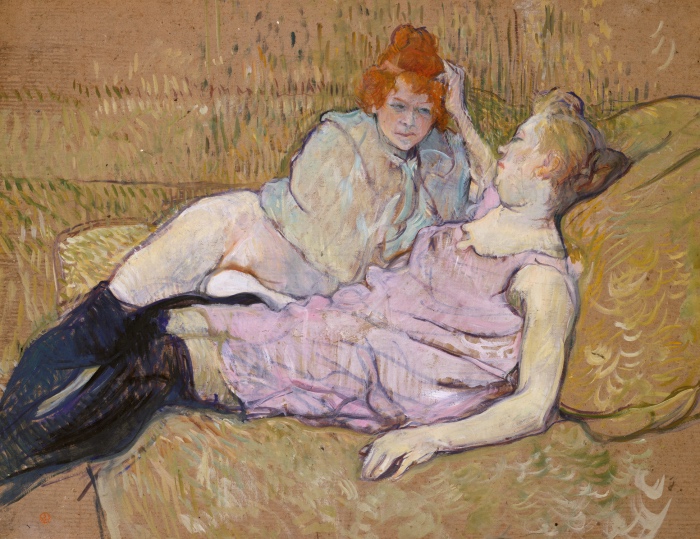Toulouse-Lautrec: 5 things to know

Foto di Maurice Guibert, Toulouse-Lautrec ritrae Toulouse-Lautrec (1891)
TOULOUSE-LAUTREC: 5 THINGS TO KNOW
Toulouse-Lautrec was a nobleman, an ill man, a heavy drinker, and had a passion for women.
His works completely renovated the art world, paving the way to modernity and being able to describe the Belle Époque in Paris, when the city was the capital of art.
Here are 5 things to know about Toulouse-Lautrec.

Henri de Toulouse-Lautrec, Babylone d’Allemagne – 1884
Color Lithography, 120×84,5 cm © Herakleidon Museum, Athens Greece
1. WHEN TOULOUSE-LAUTREC WAS BORN
Toulouse-Lautrec was born in 1864 in Albi, in the Midi-Pyrénées region of France, into an ancient noble family.
His parents were first cousins and because intermarriage between two relatives was a common practice (in order to preserve dynasty and family estate), sometimes the consequences for the health of unborn children were tragic.
He suffered from a rare bone disease called pycnodysostosis, which had compromised the growth of his legs.
2. TOULOUSE-LAUTREC’S ARTISTIC TRAINING
Toulouse-Lautrec studied at first under René Princeteau, a traditional artist and a friend of his father.
It’s in that period of time that he began developing a passion for photography, and especially for the decomposition of movement.
In fact, he made some drawings in which he decomposed the movement of some horses in motion which look like the shots in sequence taken by Eadweard Muybridge, which were displayed in France in 1881, and which Toulouse-Lautrec maybe had seen.
In 1883 Toulouse-Lautrec became a pupil of Fernand Cormon, an academic painter, and in his studio he met and befriended Vincent Van Gogh, and some years later (in 1890) Toulouse-Lautrec would challenge the painter Henri De Greux to a duel, because he had criticized the works by the Dutch painter harshly.
3. TOULOUSE-LAUTREC IN MONTMARTRE
In 1884 he moved to Montmartre together with a friend and he met and frequented Degas who lived in the same building.
He totally immersed himself in the life of Montmartre and started to depict the joyful reality of the years of the Belle Époque.

Henri de Toulouse-Lautrec, Eldorado, A. Bruant dans son Cabaret. 1892
Color Lithography, 138×96 cm © Herakleidon Museum, Athens Greece
4. TOULOUSE-LAUTREC’S MASTERPIECES
Toulouse-Lautrec became the most sought-after artist in the Parisian nightclubs, which commissioned him to paint advertising posters for stage shows, ballets and performances at the nightclubs.
But at the same time he created also the illustrations for important magazines of that time.
Toulouse-Lautrec started to make a masterpiece after another and made the style of the late 19th-century avant-gardes popular, by transforming posters, prints, lithographies and illustrations into art.
His drawings inspired ukiyo-e Japanese prints of the Edo period (between the 17th century and the 20th century) and illustrate the Parisian nightlife.
He spent a period of time in a brothel and portrayed the girls when they woke up, during their toilette, while waiting for the clients, being able to grasp the details of their life in a poetic way.
5. WHEN TOULOUSE-LAUTREC DIED
Toulouse-Lautrec is considered an exponent of Post-Impressionism, because like the Impressionists he represented reality, but he added the emotive and personal aspect which, instead, they refused.
He died at the age of only 37 due to the consequences of syphilis and alcoholism, in addition to his congenital health conditions.

Toulouse-Lautrec, The Sofa, (1894-1896 circa).
Follow me on:
About me
In this blog, I don't explain the history of art — I tell the stories that art itself tells.


